The most intriguing quirk of the common tailorbird is perhaps that it creates its nest by sewing leaves together with its beak.
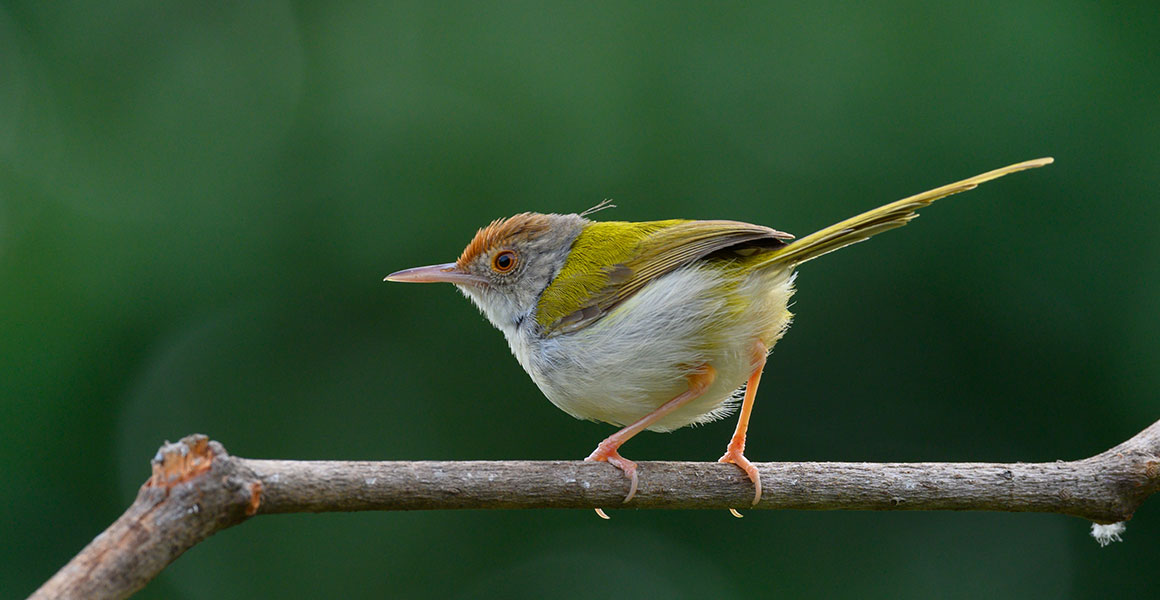
Common tailorbirds are found across Asia. In city centres, they can be found in undergrowth, gardens and parks and even shrubberies. Other locations include wooded areas, forest edges and open farmlands. © suradech sribuanoy/ Shutterstock
What is a common tailorbird?
Common tailorbirds, Orthotomus sutorius, are a species of songbirds in the Cisticolidae family. They are found across Asia.
These small birds reach around 10-14 centimetres long and weigh around 6-10 grams. They’re brightly coloured, with grey or green upper parts and chestnut on the head. The chicks start out dull green all over and transform once they reach adulthood.
Tailorbirds typically have a long tail that is held upright, and in the breeding season, males have a longer central tail. These birds form long-term bonds and remain in one location year-round.
While they are weak flyers, avoiding wide, open spaces, they are highly active creatures. They will flit between trees and shrubs, and sometimes hop on the ground to forage for insects. Tailorbirds will also feed on fruits, berries and tiny seeds, and sometimes drink nectar from flowers, which can leave them with a pollen-dusted head.
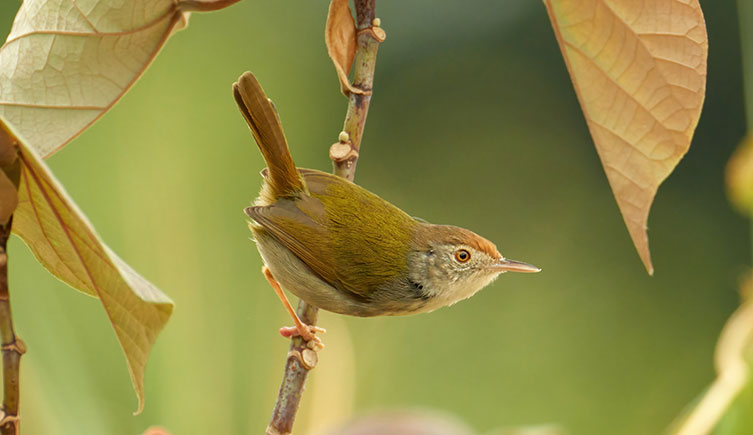
Tailorbirds get their name from their ability to ‘sew’ their nests together. This leaf-sewing method can be found in several other species that belong to the Cisticolidae family. © gszenki/ Shutterstock
Tailorbirds’ ability to ‘sew’ their own homes is remarkable, but studying their nests can be a challenge even for the most proficient bird watcher.
Douglas Russell, Senior Curator of Birds at the Museum, says, ‘Nest architecture is hugely varied. We are only just beginning to unravel the complexities of the structures of nests to learn about the evolution of these animals and their behaviours.’
Like all bird nests, the primary objective of the tailorbird’s nest is to keep chicks safe and predators out. The species suffers high levels of predation, so camouflage is key, as is a low location, about a metre above ground level.
How does a tailorbird make its nest?
The female tailorbird carefully chooses a broad, strong, supple leaf which can provide good structural support once folded. A flimsy or dead leaf won’t do as it will most likely break with stitching or under the weight of the chicks.
A leaf in the middle of thick foliage is usually chosen to avoid the nest being seen, and at the end of a branch to reduce the possibility of a predator entering the nest.
The female wraps the leaf around herself to make sure it is the right size. If it isn’t, she adds another one or two leaves.
She then uses her feet to pull the leaf together and pierces a series of miniscule holes along the leaf’s edge, using her long, slender beak, which is shaped like a needle. The holes are so tiny that the leaf holds its shape, and it doesn’t go brown.
The female threads plant fibres, such as cotton or lint, or silk from insects, such as cobwebs or caterpillar cocoons, through the holes.
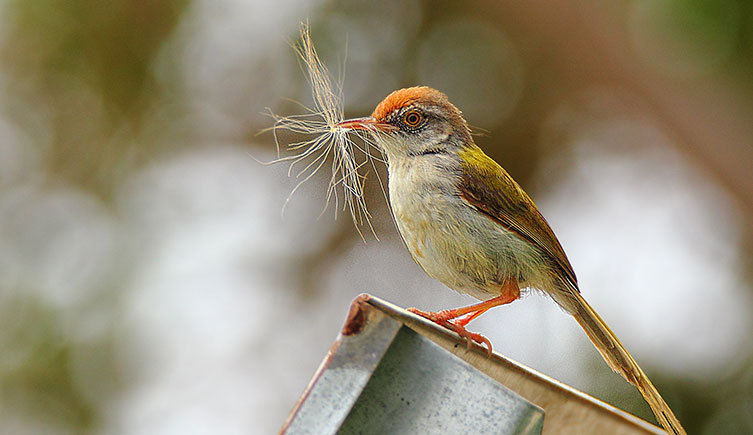
Common tailorbirds that live near human habitations have been known to steal man-made material such as cotton thread, wool and even fibres from carpets © Naim Beg/Shutterstock
The edges of the threads act like rivets, holding the leaf edges together. The stitches don’t unravel, thanks to the coarseness of the thread and elasticity of the leaf springing back to grip the thread passing through the holes. A single nest can contain between 150 and 200 stitches.
The nest even has a roof to provide shelter from the monsoon rains and offer shade from the Sun, formed by one or more pieces of leaves pulled down. This also secures and conceals the nest, preventing predators from getting in.
There may be several false starts - when the thread breaks or a leaf tears - but the female works tirelessly to repair the damage by adding more stitches or another leaf. If the damage is too severe, the nest is abandoned and a new one is made, using recycled material to save energy.
This process usually takes place in the morning or late afternoon, over the course of two to four days. All the work is done by the female but all the material is bought by the male - a test of fitness for both.
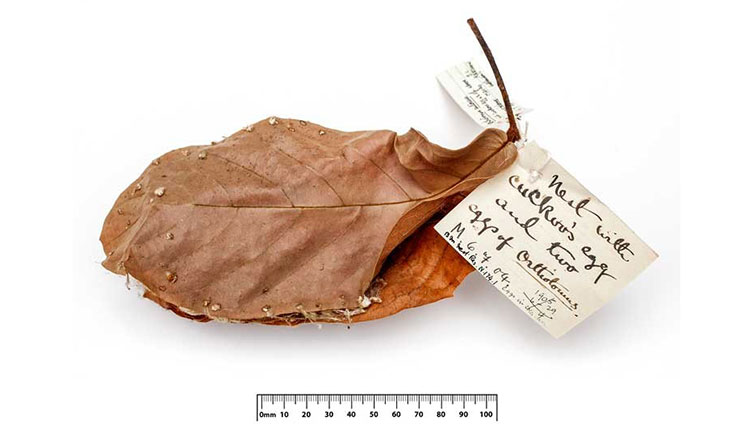
The plaintive cuckoo is a parasitic bird which likes to lay its own eggs in the common tailorbird’s nest. This specimen was discovered by John Crampton Wilkinson Kershaw in Macau, China, in 1904, while collecting the plaintive cuckoo specimens.
The nest is a deep cup that follows the natural look of the plant. The upper, shinier surface of the leaf faces outwards so there is no contrast in exterior. The nest faces the same direction that the leaves grow, so if the plant has a natural downward disposition, it stands vertically, and if the foliage stands out horizontally, so does the nest.
The nest is so skilfully put together that it is almost impossible to tell it apart from its surroundings without carefully observing the behaviour of the birds.
The real nest, however, lies within the sewn cup. The male collects and fills the cup with fine grass and lines the sides with other soft material such as animal hairs and plant downs.
‘There’s a whole range of materials birds can employ such as botanical and animal material,’ says Douglas. ‘The materials they utilise will offer different properties and birds often consciously choose those materials based on that.’
Tailorbirds often use feathers and fur to fill the leaf cup, because those materials tend to insulate the nest better than anything else. Green plant material is also used, which helps with thermoregulation and reduces the possibility of parasites such as lice.
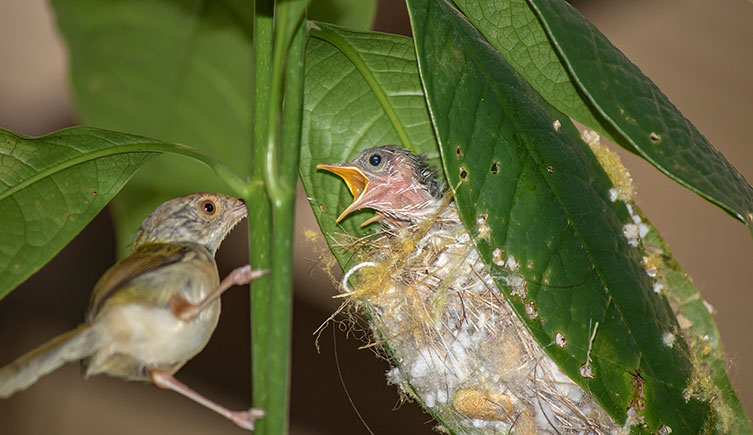
Tailorbirds nests are usually built low, at about a metre above ground level. This adult returns to its nests to feed its chicks. © nattaphol phromdecha/ Shutterstock
When do common tailorbirds lay their eggs?
Breeding season varies between species and can be year-round. The female lays between three and five pale blue eggs with brown flecks, usually one every morning, and the male feeds her while she incubates over 12 days.
Once the eggs hatch, both parents take part in feeding and raising the chicks, including sanitation. The parents initially swallow the faecal sac so as to avoid leaving the chicks alone and vulnerable to predation.
They eventually carry and drop the sacs some distance away to reduce the risk of disease and being exposed by sight and smell - a fine example of the evolution of nest hygiene within altricial passerines.
The chicks fledge at about three weeks and the nest is abandoned. The abandoned nest may be picked apart and reused by another common tailorbird couple, continuing the cycle of sophisticated nest creation.
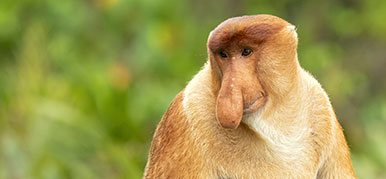
What on Earth?
Just how weird can the natural world be?
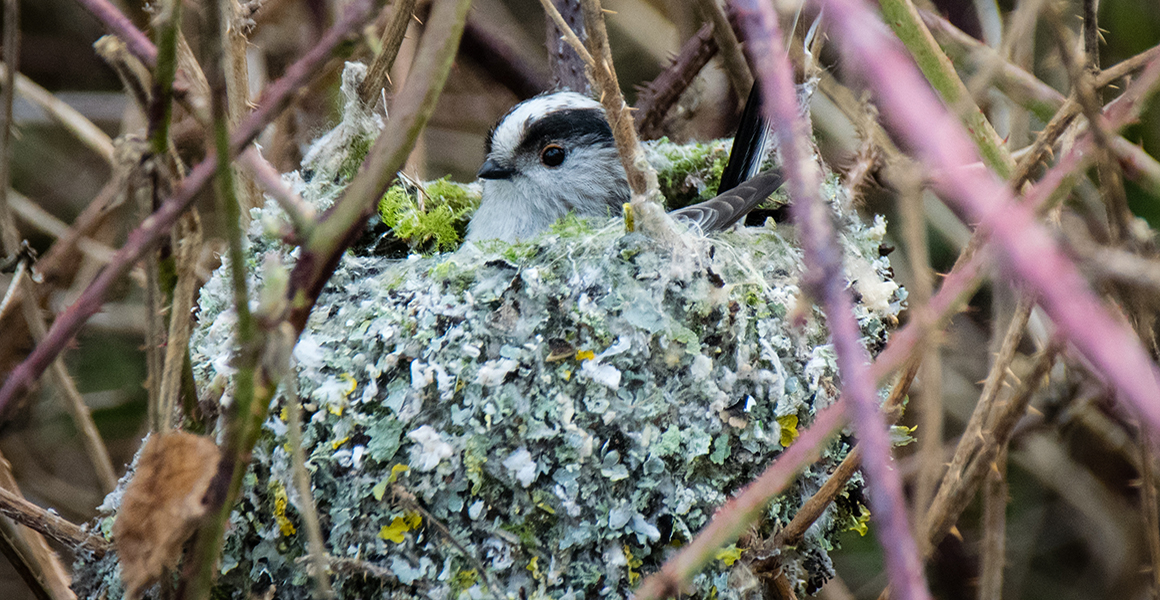

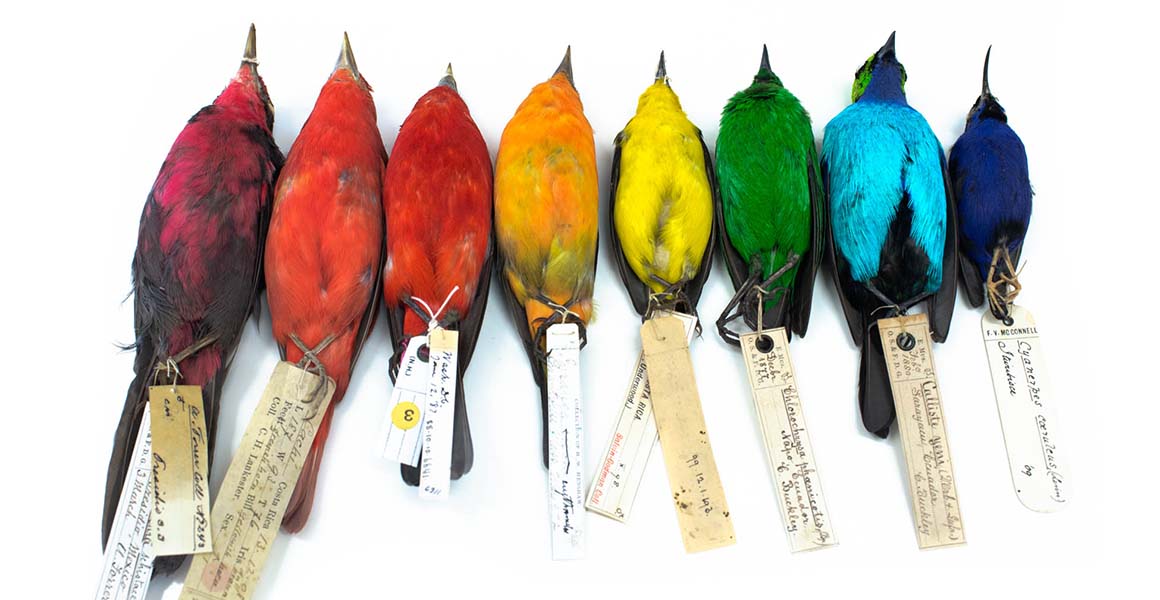
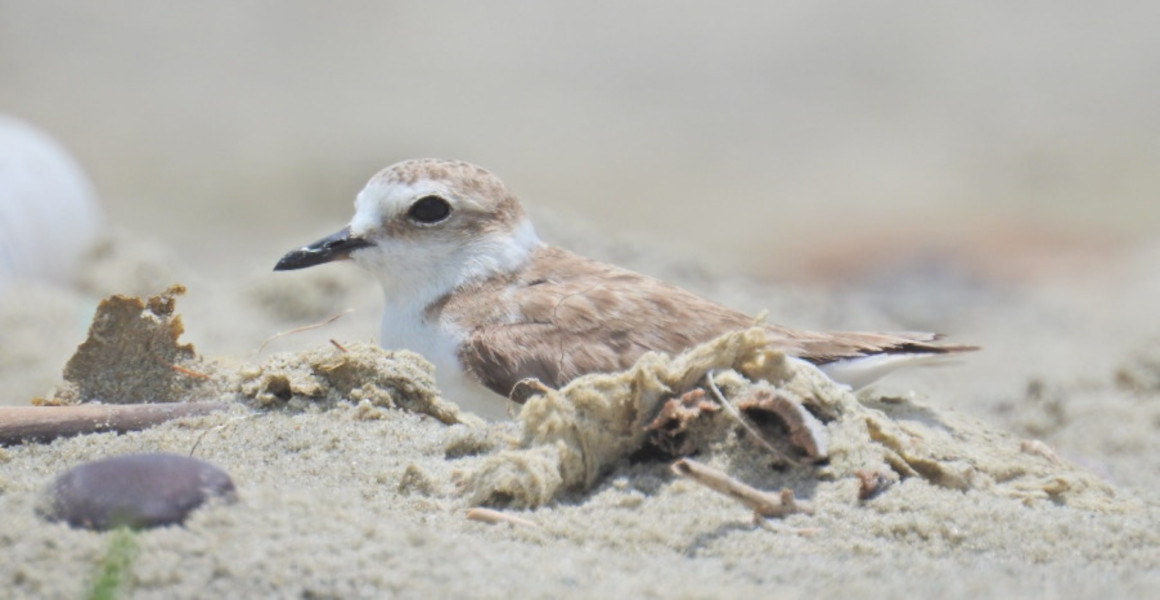
Don't miss a thing
Receive email updates about our news, science, exhibitions, events, products, services and fundraising activities. We may occasionally include third-party content from our corporate partners and other museums. We will not share your personal details with these third parties. You must be over the age of 13. Privacy notice.
Follow us on social media